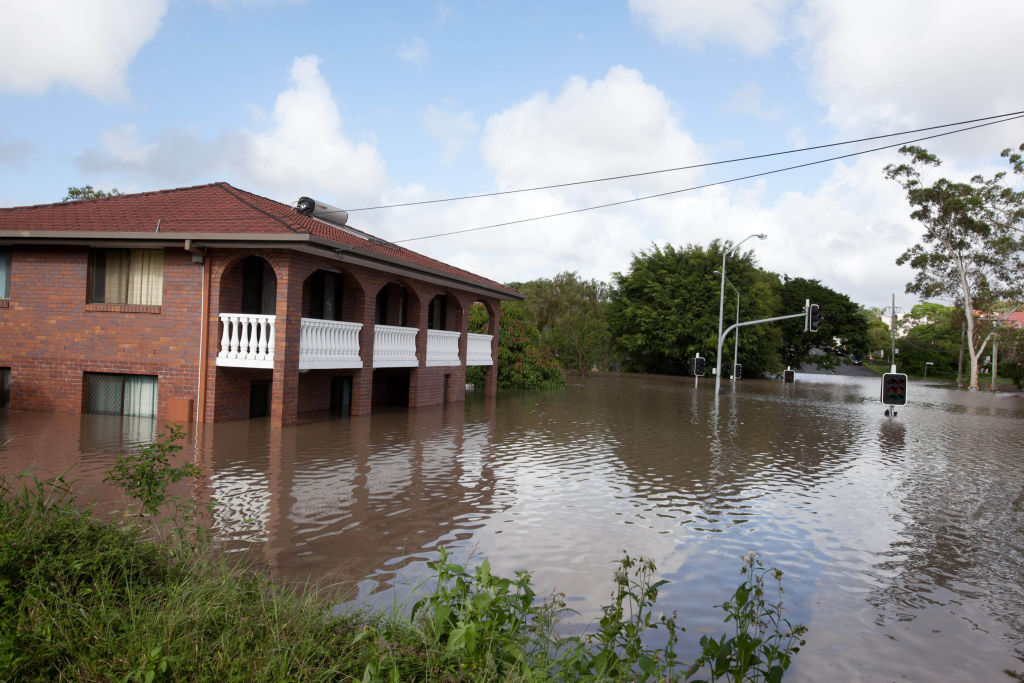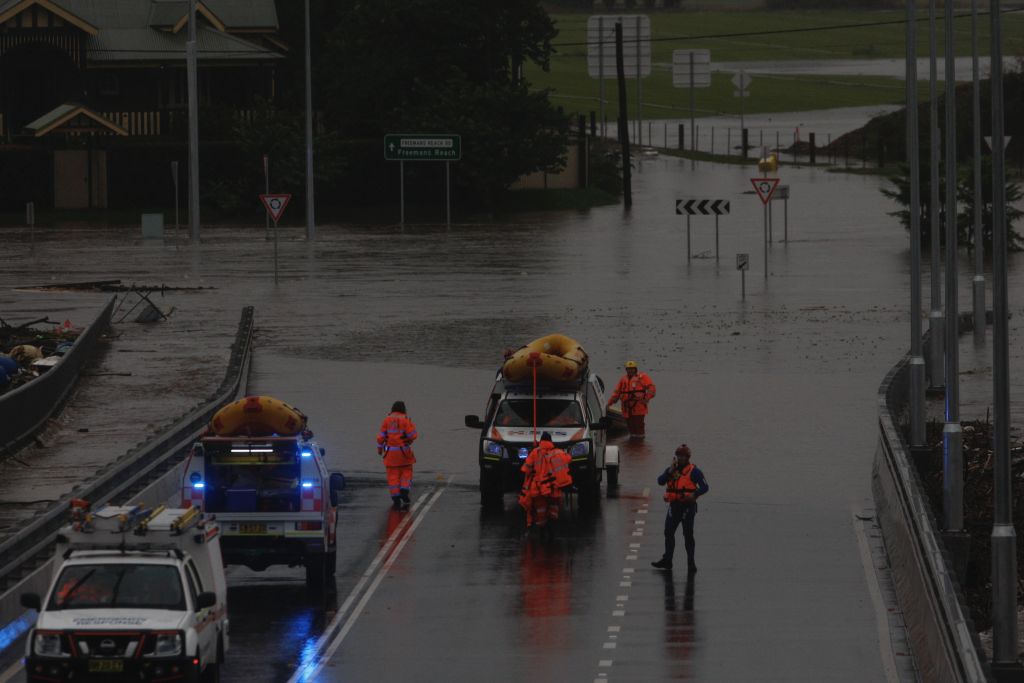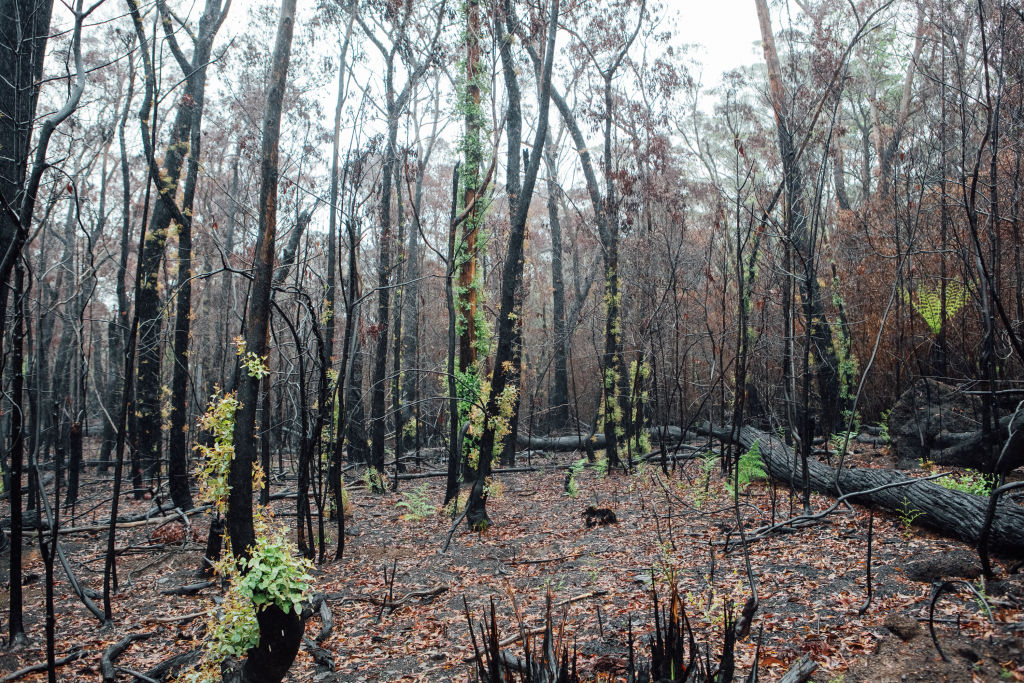How to reduce the effects of natural disasters rather than just clean up after them

A man — desperately begging for help from emergency services — dies in his car as it is swallowed by floodwaters on a road in north-west Sydney in March 2021.
In Hinchinbrook, Queensland, a 23-year-old man perishes while trying to shelter from the massive cyclone Yasi that batters northern Australia in February 2011.
In Kinglake, Victoria, a woman’s face is streaming with tears as she lifts the phone for one last call as flames race towards her home during the Black Saturday bushfires in 2009, and she believes she has only a few minutes left to live. “Hi,” she says, when her children pick up at the other end. “I just want to say goodbye.”
Natural disasters are not new in this sunburnt country, our land of drought and flooding rains. The difference between now and 1906 when Dorothea Mackellar wrote My Country is that these days the disasters are more regular, have more ferocity and, with climate change, the outlook is even more dire.
In the past three years alone, more than $7 billion has been paid out in natural disaster insurance claims in Australia, and the final cost of the latest NSW floods hasn’t been calculated yet.
We’ve become extraordinarily good at mopping up after floods, bushfires, cyclones, storm surges and being smashed by hailstones. But, the bad news is that we’ve paid little attention to mitigating devastation.
“This latest disaster has presented us with a generational opportunity to examine how we approach these issues,” said Insurance Council of Australia CEO Andrew Hall. “Of the funds we now spend, 97 per cent goes on cleaning up after disasters, while just 3 per cent is spent on mitigation or investing in more resilience.

“Our governments, to their credit, are regarded as world-leading in conducting the clean-up and helping communities get back on their feet. But the definition of insanity is to keep going back to do the same thing. If more money was invested in preventing the damage in the first place, that would be wise.”
But now, all levels of government around the country – local, state and federal as the effective re-insurers for the states since they step in when costs hit a certain level – are sharply focused on prevention and mitigation, he believes.
With more than 100 years of data on catastrophes, they’re realising this is the time to act.
“It would be a wiser investment of taxpayers’ dollars to increase flood levees and infrastructure to ensure that homes are withstanding these events,” Mr Hall said.
“Traditionally, the focus of building design in this country is survivability and if you’re having more severe weather events on more frequent occasions, you want to minimise the ongoing damage to what’s still most Australians’ single biggest asset.”
While controversy still rages around some potential measures aired, like raising the walls of the Warragamba Dam in outer Sydney, or re-routing rivers in northern Australia, there’s general agreement on many of the actions that could be taken.
In newer settlements there needs to be more green infrastructure that acts as a sponge when floods come, says Professor Ashish Sharma, an expert in hydrology and water resources at the University of NSW.
And, in older towns and cities, instead of knee-jerk, ad hoc measures after disasters, there needs to be more determined interventions beforehand. This includes improving old drainage systems and building better culverts to divert floodwaters away from homes, with similar subsidy incentives as exist with solar panels.

“I believe the solution lies is assessing the best course of action and then going for it,” Professor Sharma said. “The best action is to invest in infrastructure that can protect us from floods. We just need to look a little broadly. Netherlands as a country is half under sea level, and they have engineered things to an extent that they are reasonably well protected from flooding.
“We need to be bolder. The City of Sydney, for instance, has invested so much in the public transport network, so why can’t we do something on a similar scale to prevent flooding and safeguard our water supply? They’re both interlinked and, with one-in-a-100-year floods becoming one-in-20-year floods, and temperatures rising and soil drying, we’re going to need more intervention, which will be more expensive the longer we leave it.”
Many of the floods and bushfires are predictable when we look at past patterns. But, we simply don’t know how much more frequently they might happen or how much more powerful such events will be with climate change, says John Brockhoff, national policy manager of the Planning Institute of Australia.
“We’ve got to look at the future differently to how we’ve looked at the past,” he said. “There’s so much more uncertainty in the future with climate change and we need to adapt our decision-making to embrace the uncertainty and build in more resilience.
“We have to weigh the risks with our long-term planning decisions and make sure we choose no-regret pathways. We don’t want new development on the areas that are flood-liable and want housing on higher ground with good emergency egress. With the bushfire risk dialled up too, we want to build back better homes that can withstand the elements and aren’t in areas of uninsurable risk.”
About 70,000 people currently live on flood-affected land in the Hawkesbury-Nepean Valley but plans to move another 130,000 new residents into the disaster zones have now been paused by the NSW government pending a report from Infrastructure NSW. About 5000 of existing homes were built below the one-in-a-100-year flood line.

This is the main problem in older areas, and with homes historically built to different standards that are often at much more risk now than many of the newer developments, believes John Wynne, Urbis director of planning.
“Overall, planning has been pretty effective in setting standards around risk management and mitigation, but there’s certainly a need for review to take into account changing circumstances,” he said. “The NSW government, for instance, has now been planning for maximum one-in-200-year floods and thinking what could happen in bigger events.
“All governments are aware of the risks, but part of the issue that planning has been so inconsistent when it’s devolved to state and local government, which is not helpful. There’s now a big push for national planning for resilience and a national planning framework for all levels of government across the country since we’re all facing similar problems.”
We won’t ever be able to avoid flooding in certain low-lying areas, bushfires in heavily wooded locations or storm surges in cyclones, but we can devise ways of managing such events more effectively.
Green infrastructure is among the top strategies advised by Elizabeth Mossop, of landscape architects Spackman Mossop Michaels and the dean of design at the University of Technology, Sydney.
“There are many measures and engineering strategies that can offer us better protection, like levees and flood walls and softer elements, and working out places where rivers can flood that don’t put people at risk, so we can encourage other floodways,” she said. “You can’t look at western Sydney, for example, without thinking about urban heat.
“It’s all about making existing development more resilient. What we’re seeing in areas where the threat is extreme is a managed retreat of development and there may be places where the risks are unacceptable where development may, in future, need to be relocated.
“We need to balance public safety and shouldn’t be putting people in harm’s way. And, we need to look at questions of climate resilience now with sea levels rising, higher tides and the potential increasing intensity and frequency of storms and flooding and extreme events.”
There have been so many in recent years, too, from the horrendous Black Saturday bushfires in Victoria in 2009 to the devastating Black Summer of 2019-2020 and the fires that have just been raging in Western Australia, from the Queensland floods of 2010-2011 to the March 2021 NSW floods, from cyclone Yasi in 2011 to cyclone Debbie in 2017, from the massive Brisbane hailstorm of 2014 to the hailstorm in Canberra in January 2020.
There’s always much personal sorrow, misery and despair. Yet, so many individuals are totally unprepared, with 13 per cent of households in NSW having no insurance and 7 per cent in Victoria.
Many more are under-insured, too, says the ICA’s Andrew Hall. “The true cost of replacing an old home in a location where there’s been a bushfire can often be a lot higher than the value of that home because of the higher building codes,” he said.
“In the early days of European settlement in this country, there were some pretty bad decisions made on where to locate towns close to rivers and we’re paying a fairly high price for that. So, now is the time, with the increase in major events, for governments, hydrologists, planners, scientists, engineers and insurers to get together to make cleverer decisions for the future.”
We recommend
States
Capital Cities
Capital Cities - Rentals
Popular Areas
Allhomes
More









